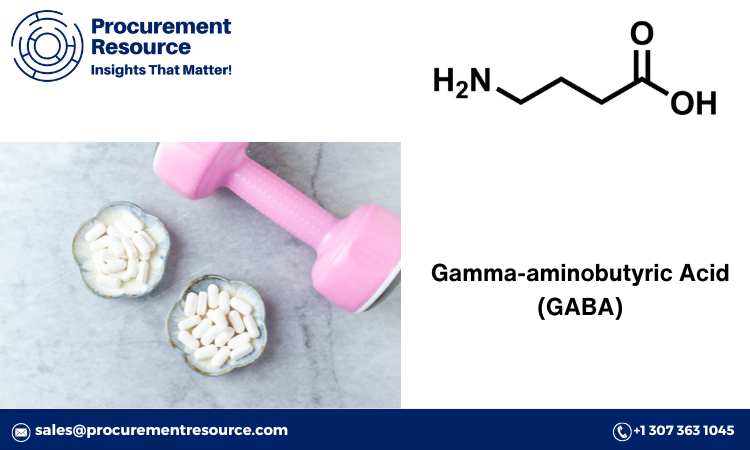Gamma-aminobutyric acid (GABA) is a crucial neurotransmitter that plays a significant role in regulating nerve activity in the human brain. Due to its various applications in pharmaceuticals, dietary supplements, and functional foods, the demand for GABA has been on the rise. Understanding the production process of GABA is essential for companies looking to optimize costs and improve efficiency. This report delves into the intricacies of the GABA production process, providing a comprehensive overview of the manufacturing techniques, raw material costs, and the latest developments in the industry.
Manufacturing Report and Process
The production of GABA primarily involves two main methods: microbial fermentation and chemical synthesis. Each method has its own set of advantages and challenges, which directly influence the overall cost of production.
1. Microbial Fermentation: Microbial fermentation is the most common method used for GABA production. This process involves the use of microorganisms, such as Lactobacillus brevis, to convert glutamate into GABA. The process is carried out under controlled conditions in bioreactors, where factors like pH, temperature, and nutrient availability are meticulously managed to optimize GABA yield. The fermentation process typically involves the following steps:
- Preparation of the Fermentation Medium: A nutrient-rich medium is prepared, which includes a source of carbon (such as glucose) and a source of nitrogen (such as ammonium salts) to support the growth of the microorganisms.
- Inoculation: The selected microorganism is inoculated into the fermentation medium.
- Fermentation: The fermentation is carried out under anaerobic or semi-anaerobic conditions for several hours or days, depending on the microorganism and the desired yield.
- Extraction and Purification: Once fermentation is complete, GABA is extracted from the fermentation broth and purified using techniques such as filtration, centrifugation, and chromatography.
2. Chemical Synthesis: Chemical synthesis is an alternative method for GABA production, often used in industrial settings where large quantities are required. This method involves the chemical reaction of glutamic acid or its derivatives under specific conditions to produce GABA. The chemical synthesis process typically includes the following steps:
- Synthesis of Glutamic Acid Derivatives: Glutamic acid is chemically modified to produce a suitable precursor for GABA synthesis.
- Reaction: The precursor is then subjected to chemical reactions, such as decarboxylation, under controlled conditions to produce GABA.
- Purification: The crude GABA is purified using techniques like recrystallization, distillation, or chromatography to achieve the desired purity level.
Both methods require stringent quality control measures to ensure that the final product meets industry standards. The choice of production method depends on factors such as the intended application, production scale, and cost considerations.
Raw Material Costs
The cost of raw materials is a significant factor in the overall production cost of GABA. The primary raw materials used in GABA production include:
- Glutamic Acid or Glutamate: Glutamic acid is the key precursor in both microbial fermentation and chemical synthesis processes. The cost of glutamic acid is influenced by factors such as the availability of raw materials (e.g., corn or sugarcane) and global market conditions.
- Microorganisms: In the case of microbial fermentation, the cost of acquiring and maintaining the microorganisms used in the process can add to the overall production cost. The cost may vary depending on the strain and the need for genetic modification or optimization.
- Nutrient Medium: The preparation of the fermentation medium involves various nutrients and additives, such as glucose, ammonium salts, vitamins, and minerals. The cost of these components can vary based on their purity and availability.
- Chemical Reagents: In chemical synthesis, the cost of chemical reagents used in the synthesis of GABA, such as solvents and catalysts, plays a role in determining the overall production cost. The cost of these reagents can fluctuate based on market demand and supply.
Additionally, the cost of energy, water, and labor also contributes to the total production cost. Companies need to continuously monitor these factors and explore cost-saving measures to remain competitive in the market.
Latest News
The GABA production industry has witnessed several recent developments aimed at improving efficiency, reducing costs, and meeting the growing demand for GABA across various sectors. Some of the notable news includes:
1. Advancements in Microbial Strain Development: Researchers have been focusing on developing genetically engineered microbial strains with higher GABA production efficiency. These advancements have the potential to significantly reduce the cost of GABA production by increasing yield and reducing fermentation time.
2. Sustainable Production Practices: With the growing emphasis on sustainability, companies are exploring eco-friendly and cost-effective production methods for GABA. This includes the use of renewable raw materials and the optimization of energy consumption during production.
3. Expanding Applications in the Food and Beverage Industry: The increasing consumer awareness of GABA’s health benefits has led to its growing use in functional foods and beverages. Companies are investing in research and development to create new GABA-enriched products, driving demand and influencing production strategies.
4. Strategic Partnerships and Collaborations: Several companies have entered into strategic partnerships and collaborations to enhance their production capabilities and expand their market presence. These partnerships often involve sharing technology, resources, and expertise to achieve cost-effective production and improve product quality.
5. Regulatory Updates: As the demand for GABA continues to rise, regulatory bodies are updating guidelines and standards to ensure the safety and efficacy of GABA-containing products. Companies need to stay informed about these regulatory changes to maintain compliance and avoid potential disruptions in production.
In conclusion, the production of Gamma-aminobutyric acid (GABA) involves intricate processes and careful consideration of raw material costs. With continuous advancements in technology and a growing focus on sustainability, the GABA production industry is poised for significant growth in the coming years. Companies that stay ahead of these trends and optimize their production processes will be well-positioned to meet the increasing demand for GABA across various sectors.
